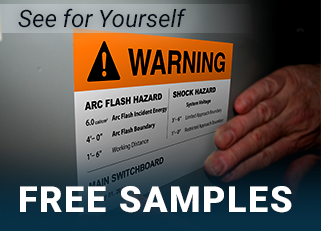Creating Content that Buyers Value
03
February,
2023
6 MINUTE READ

Content. Content. Content. Businesses know they need it, but does all content work the same? Engaging different types of learners through various content is ideal and laborious. Manufacturers have important content to share, but often do not package it in ways buyers want to consume it ? if even at all. Paul Kiesche from Aviate Creative leads the #USAMfgHour discussion on the process and shares some tips for creating content that buyers want to read.
Creative Creations
Kiesche works for a branding and creative agency with an edge in manufacturing. He opened the chat by asking the group what types of content their business creates to help market their brand, products, or services. Is it working?
"Major and key to what I do are publishing articles that understand user intent, then we create micro-pieces of the long that content into different formats," said Ruby Rusine of Social Success Marketing. "With the goal that we have for our business. Yes, it is working for me."
"Right now, we are using graphics to highlight our services, history, and sometimes current jobs that we're working on," said Obsidian Manufacturing. "We've seen a good amount of success from this but we're currently working on some video content to help with engagement as well as blogs!"
"We create Blogs, Email Blasts, Print Advertising, Direct Mail Pieces, and Video," said WiscoLift. "Blogs & Email get the best response for us."
"We use text, video, pictures, testimonial, employee spotlights, and share new of that is going on here," said Chenango Valley Technologies.
"We mix it up," said DuraTech. "Videos, blogs, repurposed blogs that are now in video format, short video clips, product demos, text. We get SOME engagement but could do better."
"I take an unorthodox approach that uses informational posts to highlight our credibility and knowledge in the area of hi-vis and scaffolding," said Northeast Demand.
"We do pictures and video on FB, Blogs, Linked In, Twitter, Pinterest, Emails and special promotions like Soctober (Collecting socks this month for a local shelter)," said Nick Rivers of Obsidian Manufacturing.
"We do email blasts, marketing literature, and digital assets, videography and YouTube, social media, a blog, a podcast, a website, trade shows (during non-COVID times)," said Radwell International.
"Is there a wrong answer for this? We use video, Social media, email blasts, pictures, case studies, blogs. There is always room for improvement and always open to fresh ideas," said SpaceGuard.
"Case studies, event recaps, informative blogs, in-depth articles, and white papers cover a majority of our Text content," said NJMEP.com. "We have informative videos on our services, webinar recordings, and ?sizzle' reels for video. We work with @MFGTalkRadio for podcasts!"
"We mainly use Social Media Posts and White Papers," said SCTools.
"Content evolves," said Jennifer Wegman, a content professional from Insight Info Solutions. "Only through trial and error do you learn what works and what doesn't. Then you can adapt accordingly. Being open and willing to change is so important!"
According to Kiesche, the answer depends on business goals and where a prospect is in the sales journey. "Different formats have different advantages," he said. "I recommend a mixed cocktail of content, so you connect with and remind the buyer throughout the journey. Something like an article, social post, or infographic is great to spark interest and be a reminder. Other content like case studies and white papers are more effective further along in the sales process to help provide proof and expertise."
Some of the types of content you can produce for marketing:
- Articles
- Blog Posts
- Guest Blog Posts
- Social Media Posts
- Case Studies
- Sell Sheets
- White Papers
- Infographics
- Podcasts
- E-books
What challenges do manufacturers have with creating content? Others in the group were also asked to share any advice for those struggling.
"I think choosing the right content is the hardest. Trying to look at your own company through the eyes of a customer can be hard," Rivers said.
"Coming up with new material, how to repurpose old material," said DuraTech.
"Some tips for creating - see what's out there and how you can expand/progress on that conversation using your brand, products, services," said Duralabel.
"There are sources that you can gather info from: Google Console, Google Keyword Planner, Google Search Google Trends - all free, and it shows you user intent already for 'potential' topics that people write about," said Rusine.
"I don't have time to plan it all out," said CVT. "I treat every day as I am a reporter and report on things that are going on here. I do what I can."
"Time is probably our biggest challenge," said Snaptron. "I'd recommend focusing on creating pillar content that can then be broken down into smaller pieces of content."
"I'm finding that if I make a list of what I've done (marketed), it shows me what to market next. I also like solving problems since that is really what we all do, right?" said WiscoLift.
Kiesche said if manufacturers are struggling to create content, they can: schedule time, define goals, narrow down the audience, uncover the problem to solve, interview their team, customers, or prospects, research statistics, blog topic ideas, and delegate.
What kind of topics should content cover? What content do buyers want?
"We are working on this. We are changing the way we are going to be doing things. I hope to eliminate ?we' and incorporate more information and calls to action," said CVT.
"Product-related topics, our industry-related topics, our culture. I do not know what our buyers want," said DuraTech.
"We have been writing about our product, services and what sets us apart in the industry," said RICO Manufacturing. "Moving forward, we will be having a better focus on also offering technical and maintenance content, which I believe customers would love to utilize."
"We have a very niche product, so we mainly focus on providing additional information about designing our product into our customer's products," said Snaptron.
"We try to create content that answers questions, showcase our services and also provides industry information that is relevant but not directly about us," said Radwell.
"Personalized content," said Rusine. "I base all content on my audience's search intent and what they are interested in. So that means I have to invest time checking analytics whether that is for the web or social media."
"We focus on problems and solutions," said Duralabel. "What do our customers need help with, what problems do they face? How could they use our products and services? Case studies and reviews are helpful with this, too."
Kiesche said a great place to get ideas for topics is from sales calls. "Listen to all the concerns, complaints, questions, etc. and then address them in your content."
To ensure your content resonates with your buyer:
- Make it about them, not a self-promo
- Address pain points & concerns
- Solve their problems
- Be personable & relatable
- Answer typical questions
- Be specific, not generic
"Avoid getting too technical in your content which may be dry and hard to follow," he said. "Also, avoid fluff content that wastes the reader's time. Get to the root of what your buyers really care about."
Content Strategies
Kiesche also suggests manufacturers format content so that it is easy to read and consume.
"We are starting to use more video with text that goes along with video. Keeping blogs and posts as short as possible," said DuraTech.
"Finding the main message of any sort of content then sticking to that message without being too wordy is important," said Obsidian. "Making it visually appealing is also paramount (graphics, videos, pictures) instead of only using words."
"Personalize it," said Rivers. "I can say what does the machine operator ?like, want and need?' then the machine, ?like want and need' the part being made - same question and then the customer same question - it can lead to a multitude of usable interesting content."
"Shorter formats, adding titles to video, more visuals," said Radwell.
Format your content for easier reading, Kiesche said.
- Break up long content into digestible lengths
- Address the problem & audience in the headline, deck line & intro
- Add subheads, pull quotes & stats for a quick read
- Use strong images
- Include a call-to-action
Telling or sharing a story can help potential customers visualize the benefits of products, services, and working with a company. Kiesche then asked the group if they conduct interviews to help produce content and their strategies for better interviewing.
"We have done interviews for our case studies and white papers, but not much else," said DSI/Dynamatic. "As a former journalist, I'm well-versed in interviewing people. I plan to do more of it in our 2021 marketing plans."
"I have not but I am open for that," said Northeast Demand.
"I like the idea of interviews to produce content but when people see me with the video camera they run away (seriously). I will have to work on my strategies in 2021," said WiscoLift.
Make it as easy, positive, and comfortable for the interviewee as you can, Kiesche said. Try these interview strategies:
- Interview prospects, customers & staff
- Make it fun & positive
- Prepare & share questions ahead of time
- Schedule for 15-20 min.
- research prior
Another important part of content creation is to make it credible, trustworthy, and continually improve, said Kiesche.
 "Prove it," said Foxmere. "Case studies and white papers go a LONG way. There are certain values we have here at Foxmere that we're yet to market purely because we want to build a library of proof first."
"Prove it," said Foxmere. "Case studies and white papers go a LONG way. There are certain values we have here at Foxmere that we're yet to market purely because we want to build a library of proof first."
"I sometimes link to the actual source (i.e., OSHA pg) to show its credibility. I only like to write factual information that comes directly from the manufacturer," said WiscoLift.
"If the customer allows it," said DuraTech. "MUCH of what we do is proprietary, so proving it can be tough."
"We have to prove ourselves," said Dynamatic. "We also use case studies and white papers to prove our technology works. We also use testimonials! To us, those are like Amazon product reviews. It goes a long way when someone else can vouch for your product."
Kiesche said to keep content educational and not self-promotional. "Get it published in a publication or blog," he said. Manufacturers can also partner with associations, podcasts, or other organizations, use statistics, and cite resources.
About #USAMfgHour
Anyone who champions U.S. manufacturing can join in on a new conversation each week on Twitter using the hashtag #USAMfgHour. The chat starts at 11 a.m. Pacific Standard Time/2 p.m. Eastern. Share positive blog posts, helpful articles, news, important information, accomplishments, events, and more with other manufacturers and supporters from throughout the country.
Are you interested in hosting a #USAMfgHour chat? Contact organizers @CVTPlastics, @DCSCinc, and @SocialSMktg.
RELATED RESOURCES

Tips to Attract and Retain Workers in Manufacturing
Manufacturers need a strong recruitment strategy to keep ahead of production and meet business goals. Here ...
Read
Facebook Optimization Tips for Manufacturers
Manufacturers can use Facebook to achieve numerous goals. Ruby Rusine from Social Marketing Success shares ...
Read
How to Grow Credibility as an Industry Leader
What grabs your ideal client's attention? What holds it? Paul Kiesche of Aviate Creative, a branding and ...
Read.png)


